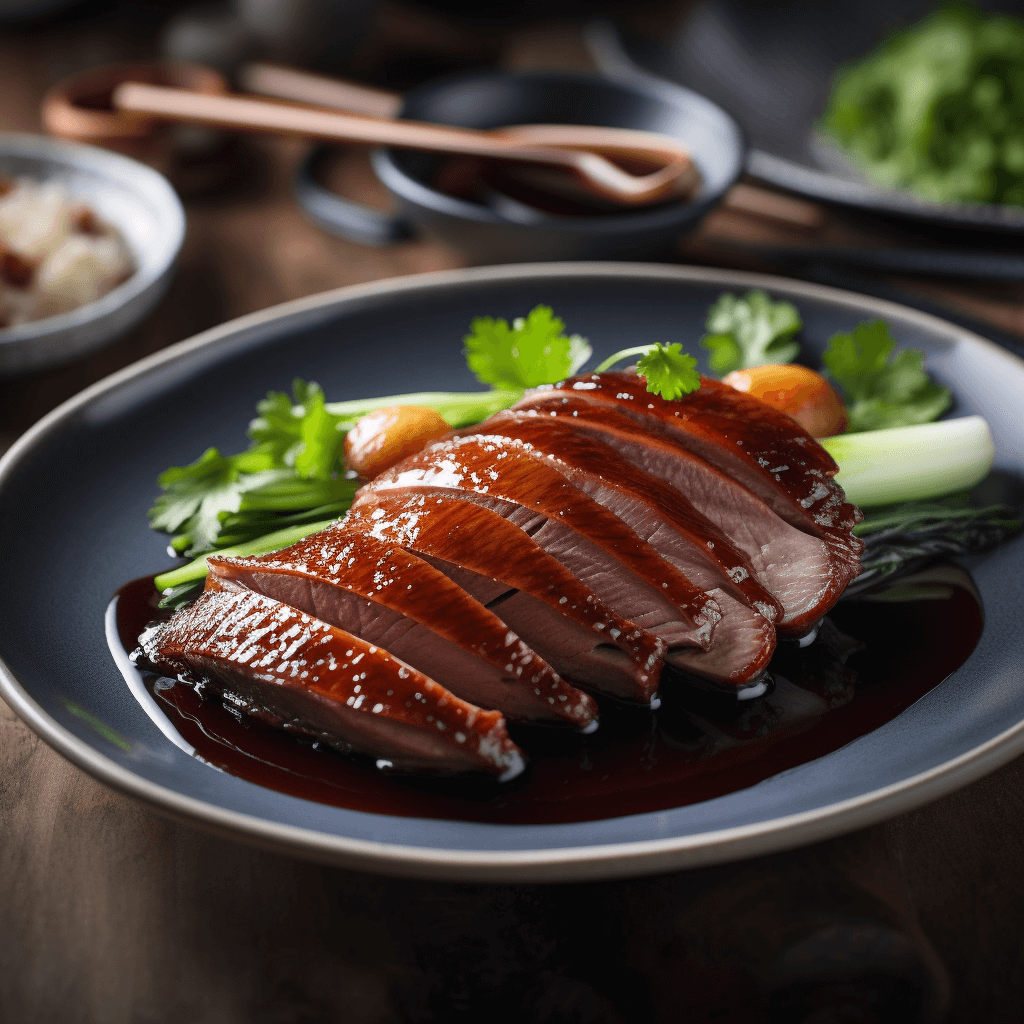
From royal banquets to humble family dinners, Peking Duck has been a symbol of Chinese culinary heritage for centuries. Its crispy skin, succulent meat, and intoxicating aroma have captivated food enthusiasts around the globe. Today, we embark on a fascinating journey to explore the captivating history of this iconic dish.
The roots of Peking Duck can be traced back to the Northern and Southern Dynasties of China (420-589 AD). Initially known as "Shaoyazi," the dish was served to the imperial court and considered a prestigious offering. However, it was during the Yuan Dynasty (1271-1368) when the dish began to evolve into the delicacy we know today.
In the Yuan Dynasty, the capital city was moved to Beijing, which was then known as Dadu. The rulers of this time developed a preference for roasted duck, which was abundant in the surrounding areas. The popularity of the dish spread throughout the court, eventually reaching the common people. During the Ming Dynasty (1368-1644), the dish's preparation was refined and became even more popular.
It was during the Qing Dynasty (1644-1911) that the recipe for Peking Duck was perfected. In the 19th century, a restaurant called Quanjude, located in Beijing, pioneered the use of open ovens to roast ducks. This method allowed the duck to cook more evenly, resulting in a crispier skin and more tender meat. Quanjude's innovative roasting technique soon became the gold standard for Peking Duck preparation, and the dish gained even greater acclaim.
The dish's popularity continued to grow and reached international fame in the 20th century. As world leaders and dignitaries visited China, they were often treated to Peking Duck as a symbol of Chinese hospitality. One notable event occurred in 1972 when US President Richard Nixon visited China. During his stay, he dined on Peking Duck, and the dish quickly gained popularity in the United States.
The preparation of Peking Duck is a labor-intensive process that requires skill and patience. First, the duck is marinated in a blend of spices and then air-dried for several hours. The skin is separated from the meat by pumping air between the two layers, ensuring that the skin becomes crispy during roasting. Next, the duck is roasted in an open oven, allowing the fat to melt away and the skin to crisp up.
Once cooked, the duck is traditionally carved tableside by a skilled chef. The thin, crispy skin is the highlight of the dish, often served with a dollop of sweet bean sauce, julienned cucumbers, and scallions. The succulent meat is then wrapped in thin pancakes and eaten like a small burrito, providing a delightful contrast of textures and flavors.
Over the years, Peking Duck has inspired many variations and adaptations worldwide. Chefs have experimented with different marinades, sauces, and accompaniments to cater to diverse tastes. Despite these changes, the essence of Peking Duck remains the same - a celebration of Chinese culinary artistry and a testament to the rich history and culture from which it emerged.
In conclusion, the story of Peking Duck is one of culinary evolution and cultural exchange. From its humble beginnings in ancient China to its current status as a global culinary icon, Peking Duck has delighted the palates of people from all walks of life. The dish's rich history is a testament to the enduring appeal of Chinese cuisine and a reminder of the power of food to bring people together across borders and time.